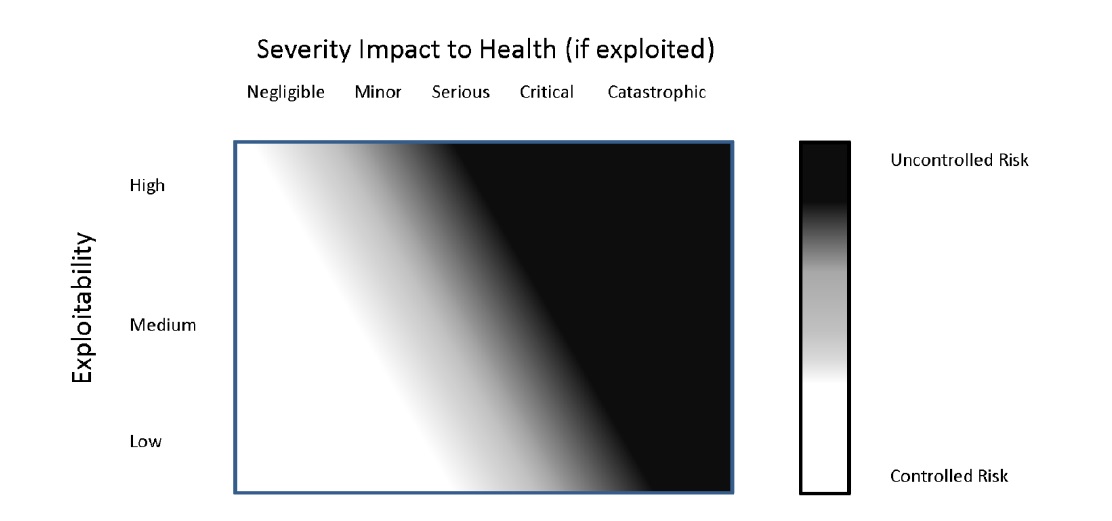FDA Issues Draft Guidance Document for Postmarket Management of Cybersecurity in Medical Devices (Part 2 of 4)
Risk Assessment and Management in a Dangerous World
Manufacturers of medical devices are faced with ever-increasing cyberattacks that could impact patient safety and the efficacy of useful devices. One insurance group identified cyberthreats to medical devices as “open and growing”, describing a difficult “real world” scenario involving implantable defibrillators. The article noted that a variety of critically helpful medical devices could have been impacted by hackers seeking to extort money, or, in a darker scenario, cause harm to patients. Clearly, an individual willing to cause harm to people by gaining control of a medical device could not only hurt individual patients, but also create panic in patient groups who are in need of medical devices to maintain good health. If patients come to distrust medical devices, their rejection could severely impact the medical community’s ability to effectively treat certain diseases and acute medical issues. As such, it is critical that manufacturers engage in appropriate risk management, which protects consumers from losing viable health care options, as well as preventing serious attacks on the safety of individual patients.
The FDA’s draft guidelines would require manufacturers to include “risk analysis, risk evaluation (and) risk control” as a part of the lifecycle management of a medical device. The process must focus on “assessing the risk to the device’s essential clinical performance.” (emphasis in original) In looking at the risk, the manufacturer must consider “(1) the exploitability of the cybersecurity vulnerability, and (2) the severity of the health impact to patients if the vulnerability were to be exploited”. The FDA clearly is looking at a risk/benefit analysis that focuses on the likelihood the risk can be exploited and the relative severity of the health impact to patients in the event the of such exploitation.
In assessing the vulnerability of a medical device, the FDA recommends using a vulnerability scoring system which provides a ranking that ultimately is translated into low, medium and high degree of vulnerability to exploitation. While there are several such scoring systems, the agency quotes from the “Common Vulnerability Scoring System, Version 3.0” as a useful tool. This tool looks at a myriad of factors, including: attack vector, attack complexity, privileges required, user interaction, scope, confidentiality impact, integrity impact, availability impact, exploit code maturity, remediation level and report confidence. In utilizing these concepts, the scoring system ultimately allows the manufacturer to plot the vulnerability of its product as low, medium or high.
The other side of the ledger is assessing the severity of the impact to the patient’s health, if the vulnerability were exploited. Again, the agency does not require a specific system, but it does quote from “ANSI/AAMI/ISO 14971: 2007/(R)2010: Medical Devices—Application of Risk Management to Medical Devices. This assessment tool rates the health impact in five categories: Negligible; Minor; Serious; Critical; and Catastrophic. Obviously, the severity of health impact increases up the continuum.
When a manufacturer assesses both the Exploitability of the vulnerability and the Severity of Impact the Health (if Exploited), it can plot the points graphically and gain additional understanding regarding the severity of the risk. Obviously, even a low level of Exploitability must be monitored and readied for remediation if the severity of impact to health is catastrophic. Likewise, a potentially high Exploitability number may not be problematic when compared to a negligible or minor risk. The scale is not rigid. The current draft recommends that “manufacturers make a binary determination that the vulnerability is either controlled or uncontrolled using an established process that is tailored to the product, its essential clinical performance and the situation.”
The graph below demonstrates an example of how a company could plot these numbers and utilize the matrix to assist in developing a plan from remediation.

The lighter areas demonstrate controlled risk, while the darker shading indicates uncontrolled risk, which requires remediation.
Stay tuned for "Part Three of Four - Remediating and Reporting Cybersecurity Vulnerabilities" coming soon. Read "Part 1 - Background and Overview of Essential Concepts" here.
related services

All Claims Means ALL: The PREP Act Provides Immunity in COVID-19 Vaccination Case ...

Jackson County, Missouri Jury Rejects 3M Surgical Blanket Infection Claims ...
About Drug / Device Law Blog
Baker Sterchi's Drug / Device Law Blog examines topics and legal developments of interest to the drug and device industry. Learn more about the editor, Paul Penticuff, and our Drug and Device practice.
Subscribe via email
Subscribe to rss feeds
RSS FeedsABOUT baker sterchi blogs
Baker Sterchi Cowden & Rice LLC (Baker Sterchi) publishes this website as a service to our clients, colleagues and others, for informational purposes only. These materials are not intended to create an attorney-client relationship, and are not a substitute for sound legal advice. You should not base any action or lack of action on any information included in our website, without first seeking appropriate legal or other professional advice. If you contact us through our website or via email, no attorney-client relationship is created, and no confidential information should be transmitted. Communication with Baker Sterchi by e-mail or other transmissions over the Internet may not be secure, and you should not send confidential electronic messages that are not adequately encrypted.
The hiring of an attorney is an important decision, which should not be based solely on information appearing on our website. To the extent our website has provided links to other Internet resources, those links are not under our control, and we are not responsible for their content. We do our best to provide you current, accurate information; however, we cannot guarantee that this information is the most current, correct or complete. In addition, you should not take this information as a promise or indication of future results.
Disclaimer
The Drug / Device Law Blog is made available by Baker Sterchi Cowden & Rice LLC for educational purposes only as well as to give you general information and a general understanding of the law, not to provide specific legal advice. Your use of this blog site alone creates no attorney client relationship between you and the firm.
Confidential information
Do not include confidential information in comments or other feedback or messages related to the Drug / Device Law Blog, as these are neither confidential nor secure methods of communicating with attorneys. The Drug / Device Law Blog should not be used as a substitute for competent legal advice from a licensed professional attorney in your state.











